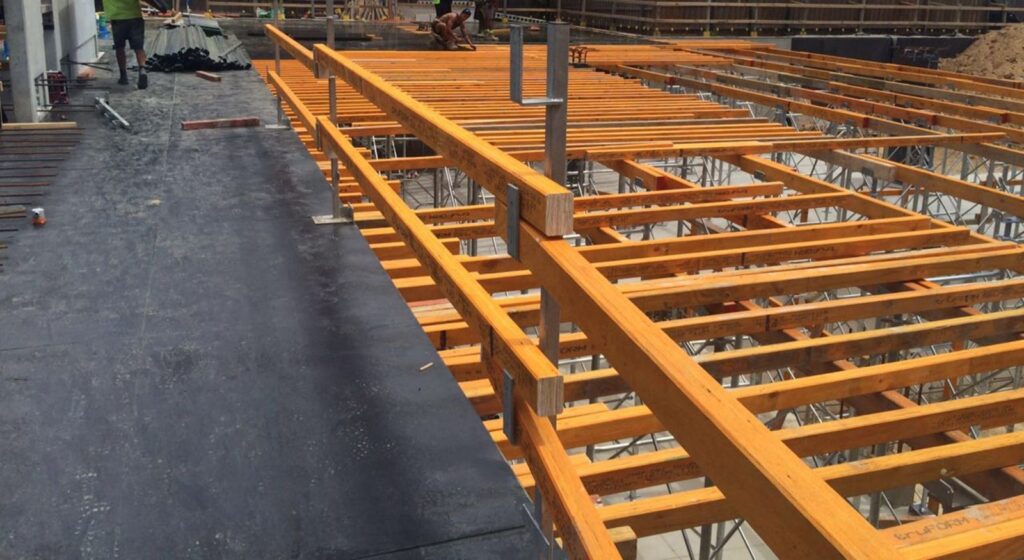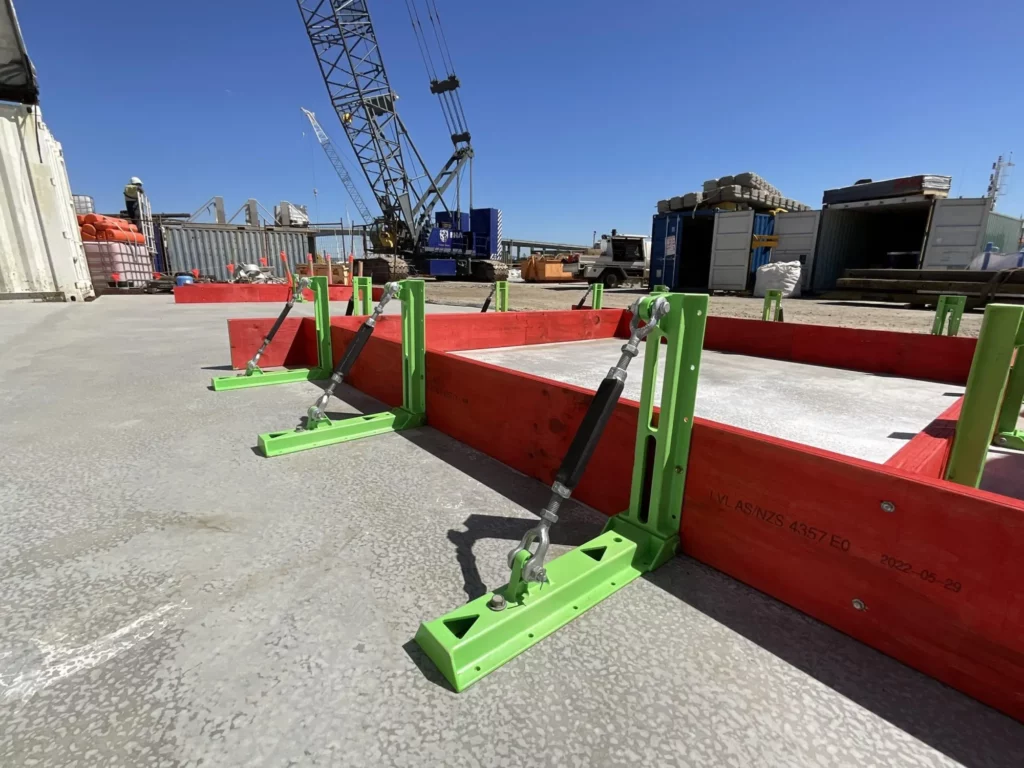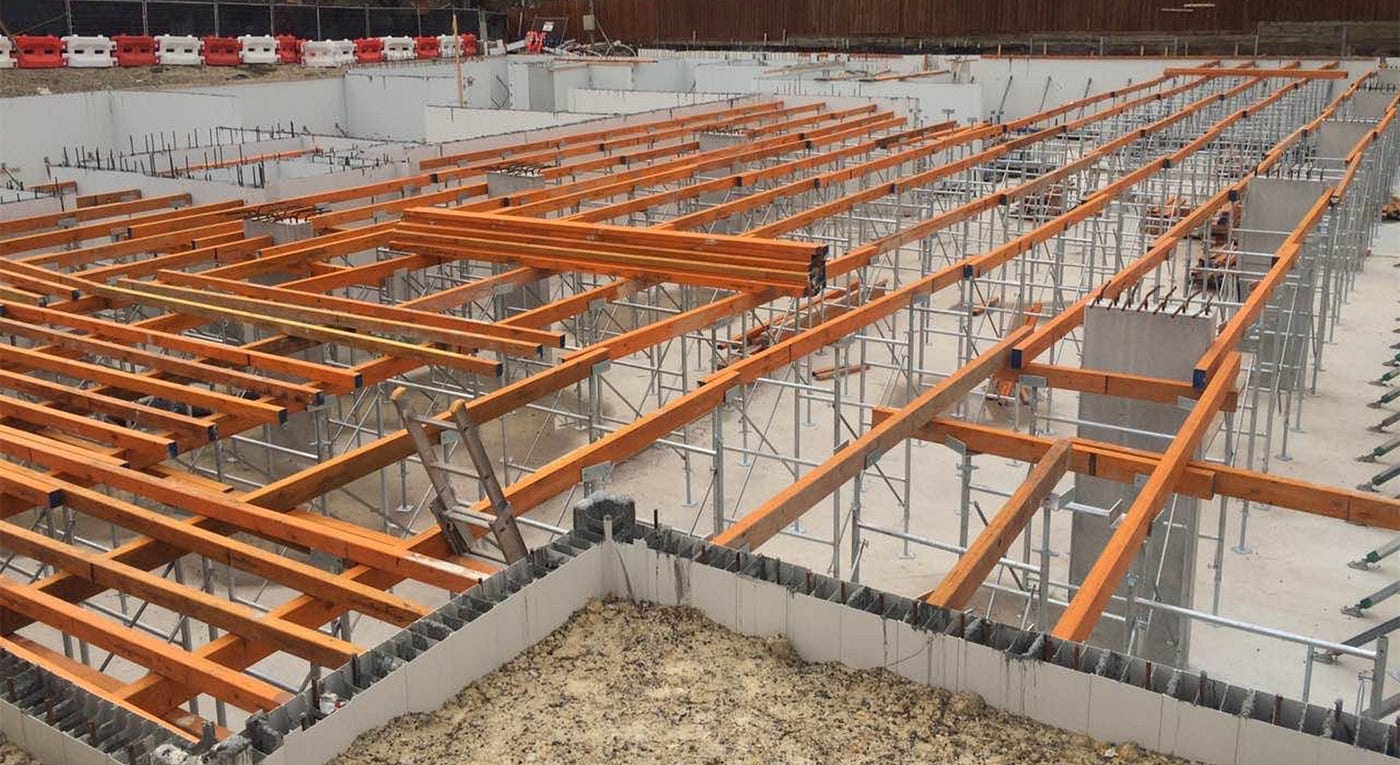LVL (Laminated Veneer Lumber) formwork is a critical component in the construction industry, providing a versatile and efficient solution for building projects. With its unique properties and numerous advantages, LVL formwork has revolutionized the way structures are erected, offering enhanced efficiency and precision in the building process.
Sustainability and LVL Formwork
As the construction industry places a greater emphasis on sustainability, LVL formwork timber emerges as an eco-friendly solution that aligns with green building practices.
When considering the environmental impact of LVL formwork, it is essential to highlight the intricate process involved in its production. The manufacturing of LVL formwork begins with the careful selection of sustainably sourced timber. This timber is then peeled into thin veneers, which are dried, layered, and bonded together using adhesives under high pressure and heat. This meticulous process not only ensures the strength and durability of LVL formwork but also emphasizes its eco-friendly nature.
Environmental Impact of LVL Formwork
LVL formwork is manufactured from sustainably sourced timber, ensuring a minimal ecological footprint. The veneer used in its production comes from responsibly managed forests, supporting the preservation of natural resources. Additionally, LVL formwork is free from harmful chemicals, minimizing environmental pollution during its lifespan.
Furthermore, the sustainable practices employed in the production of LVL formwork extend beyond just the sourcing of raw materials. The manufacturing process itself is designed to optimize resource efficiency and reduce waste generation. By utilizing advanced technology and precise engineering, LVL formwork manufacturers strive to minimize their environmental impact at every stage of production. Click here to get about technical specifications of LVL formwork for engineers.
LVL Formwork in Green Construction
With the rising demand for environmentally friendly construction methods, LVL formwork is increasingly incorporated into green building projects. Its reusability, durability, and sustainable sourcing make it an ideal choice for those seeking to reduce waste and energy consumption. By using LVL formwork, construction companies can contribute to the preservation of the environment while constructing structures that meet the highest sustainability standards.
Moreover, the versatility of LVL formwork allows for its application in a wide range of construction projects, from residential buildings to large-scale commercial developments. Its ability to withstand high loads and provide a smooth concrete finish makes it a preferred choice for contractors aiming to achieve both structural integrity and aesthetic appeal in their projects. As the construction industry continues to evolve towards more sustainable practices, LVL formwork stands out as a reliable and environmentally conscious solution for modern builders.
Understanding LVL Formwork
LVL formwork is a system that uses laminated veneer lumber to provide temporary support and moulding for concrete during construction. It consists of high-quality plywood panels that are reinforced with bonded veneer lumber beams. This combination of materials offers superior strength, dimensional stability, and durability, making LVL formwork an ideal choice for a wide range of construction projects.
When it comes to constructing buildings and infrastructure, precision and reliability are paramount. LVL formwork panels excel in meeting these demands by offering a level of consistency and performance that is essential for achieving high-quality concrete structures. The meticulous engineering and manufacturing processes involved in creating LVL formwork ensure that each panel meets stringent quality standards, resulting in a reliable and robust system that builders can trust.
The Basics of LVL Formwork
LVL formwork panels are lightweight and easy to handle, making them convenient to transport and install on construction sites. They come in various sizes and thicknesses, allowing for flexibility to meet different project requirements. The panels are designed with precision to ensure accurate form placement and stability, resulting in a smooth and uniform concrete finish.
Moreover, the versatility of LVL formwork extends beyond its ease of handling. The panels are engineered to be reusable, reducing waste and overall project costs. This sustainability aspect makes LVL formwork not only a practical choice for construction but also an environmentally conscious one. By incorporating reusable materials into the construction process, builders can minimize their environmental impact and contribute to a more sustainable industry. Click here to learn why LVL formwork Is a game-changer for builders.

Key Features of LVL Formwork
One of the standout features of LVL formwork is its ability to withstand high levels of pressure from the weight of wet concrete. The laminated veneer lumber beams distribute the load evenly, preventing any deformation of the formwork and maintaining structural integrity. Additionally, LVL formwork can be easily cut to fit different shapes and sizes, providing versatility in design and construction.
Furthermore, the durability of LVL formwork ensures that it can withstand the rigors of construction sites, including exposure to varying weather conditions and repetitive use. This resilience translates to cost savings for builders, as the longevity of LVL formwork means fewer replacements and repairs over time. Investing in a reliable and durable formwork system like LVL not only enhances the efficiency of construction projects but also contributes to long-term cost-effectiveness.
The Role of LVL Formwork in Construction Efficiency
Efficiency is a crucial factor in any construction project, and LVL formwork offers several advantages that help expedite the building process.
When considering the role of LVL (Laminated Veneer Lumber) formwork in construction efficiency, it’s important to delve into the structural composition of this material. LVL is engineered by bonding multiple layers of thin wood veneers together, resulting in a strong and dimensionally stable product. This structural integrity not only enhances the efficiency of formwork installation but also ensures the consistent performance of the system throughout the construction process.
Furthermore, the environmental sustainability of LVL formwork adds another layer of efficiency to construction projects. LVL is typically manufactured from fast-growing and replenishable wood species, making it a renewable resource. By choosing LVL formwork, construction companies can reduce their carbon footprint and contribute to a more sustainable building industry.
Time-Saving Aspects of LVL Formwork
Due to its lightweight nature and easy installation, LVL formwork reduces the time required for formwork assembly and dismantling compared to traditional formwork systems. This streamlined process minimizes labor and material costs, allowing construction projects to be completed within shorter timeframes. Furthermore, the consistent quality of LVL formwork ensures faster concrete curing times, enabling subsequent construction activities to commence promptly.
Moreover, the versatility of LVL formwork extends beyond its primary use in concrete formwork. This material can also be adapted for various architectural applications, such as creating curved or custom-shaped concrete elements. By utilizing LVL formwork for these specialized construction requirements, project timelines can be further optimized without compromising on design intricacies.
Cost-Effectiveness of Using LVL Formwork
Cost-efficiency is a significant advantage of LVL formwork. Its reusability allows for substantial savings on material expenses, as the panels and beams can be utilized in multiple projects. The durability of LVL formwork also contributes to cost-effectiveness, as it minimizes maintenance and replacement costs over the lifespan of a building. Moreover, the precise and accurate concrete finishes achieved with LVL formwork reduce the need for additional finishing work, further reducing overall project costs.
Additionally, the dimensional stability of LVL formwork translates to minimal material wastage during construction, optimizing resource utilization and reducing project overheads. This aspect of cost-effectiveness aligns with sustainable construction practices, where efficiency in material usage is paramount for both economic and environmental reasons.

Precision in Building with LVL Formwork
Precision is paramount in construction, ensuring the structural integrity and aesthetic appeal of a building. LVL (Laminated Veneer Lumber) formwork plays a crucial role in achieving architectural accuracy and maintaining structural integrity.
Achieving Architectural Accuracy with LVL Formwork
LVL formwork enables the creation of intricate architectural designs with precision and ease. The flexibility of LVL panels allows for curved and geometrically complex formwork configurations, ensuring that even the most challenging architectural specifications are met. Architects and builders can push the boundaries of design, creating unique structures that stand out in their innovation and beauty. The use of LVL formwork opens up a world of possibilities, allowing for the realization of bold and imaginative architectural visions.
Moreover, the precision offered by LVL formwork extends beyond just the visual aspect of a building. It also ensures that the structural elements align perfectly, enhancing the overall functionality and longevity of the structure. By utilizing LVL formwork, builders can achieve not only architectural excellence but also practical efficiency in construction.
LVL Formwork and Structural Integrity
Structural integrity is of utmost importance in construction, and LVL formwork provides the necessary support to ensure a solid and durable structure. The strength and stability of the laminated veneer lumber beams prevent any deformation or bending during the concrete pouring process, resulting in a uniform load distribution. This uniformity significantly reduces the risk of structural failures, ensuring the safety of the building.
Additionally, the durability of LVL formwork contributes to the long-term structural integrity of a building. LVL panels are known for their resistance to warping, twisting, and shrinking, ensuring that the formwork maintains its shape and strength over time. This longevity not only enhances the structural stability of the building during construction but also guarantees its continued safety and reliability for years to come.
Future Trends in LVL Formwork
LVL formwork continues to evolve alongside advancements in technology and global construction industry trends.
Technological Advancements and LVL Formwork
The integration of technology in construction is revolutionizing the way buildings are designed and constructed. LVL formwork is no exception to this trend, with digital modeling and automated fabrication techniques enhancing accuracy and efficiency in formwork systems. The use of Building Information Modeling (BIM) software enables precise formwork planning, eliminating errors and optimizing resource utilization.
One exciting technological advancement in LVL formwork is the use of robotics. Robots can now be programmed to assemble and dismantle formwork structures, reducing the need for manual labor and increasing productivity. These robots are equipped with advanced sensors and algorithms that allow them to navigate complex construction sites, ensuring precise placement of formwork components. This not only saves time but also improves safety on the construction site.
LVL Formwork in the Global Construction Industry
The global construction industry is experiencing rapid growth, with a greater demand for efficient and sustainable building methods. LVL formwork’s versatility, cost-effectiveness, and environmental benefits position it as a key player in meeting these demands. Furthermore, its ability to adapt to various architectural styles and construction practices ensures its relevance in both established and emerging markets.
In addition to its adaptability, LVL formwork is also contributing to the development of sustainable construction practices. The use of engineered wood products like LVL helps reduce the carbon footprint of construction projects by sequestering carbon dioxide, a greenhouse gas, within the wood fibers. This makes LVL formwork an environmentally friendly choice for builders and developers who are committed to reducing their impact on the environment.
Moreover, LVL formwork is gaining popularity in regions prone to earthquakes. Its high strength-to-weight ratio and excellent load-bearing capacity make it an ideal choice for seismic-resistant structures. By using LVL formwork, builders can ensure the safety and durability of buildings in areas with high seismic activity.
In conclusion, LVL formwork has become a game-changer in the construction industry, enhancing efficiency and precision in building projects. Its unique properties, time-saving aspects, and sustainable nature make it an attractive choice for architects, engineers, and contractors alike. As the future of construction continues to embrace innovation, LVL formwork is poised to play a significant role in shaping the buildings of tomorrow.
More to read: Factors to consider before hiring a Melbourne buyers agent

